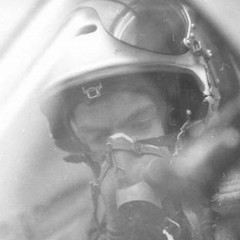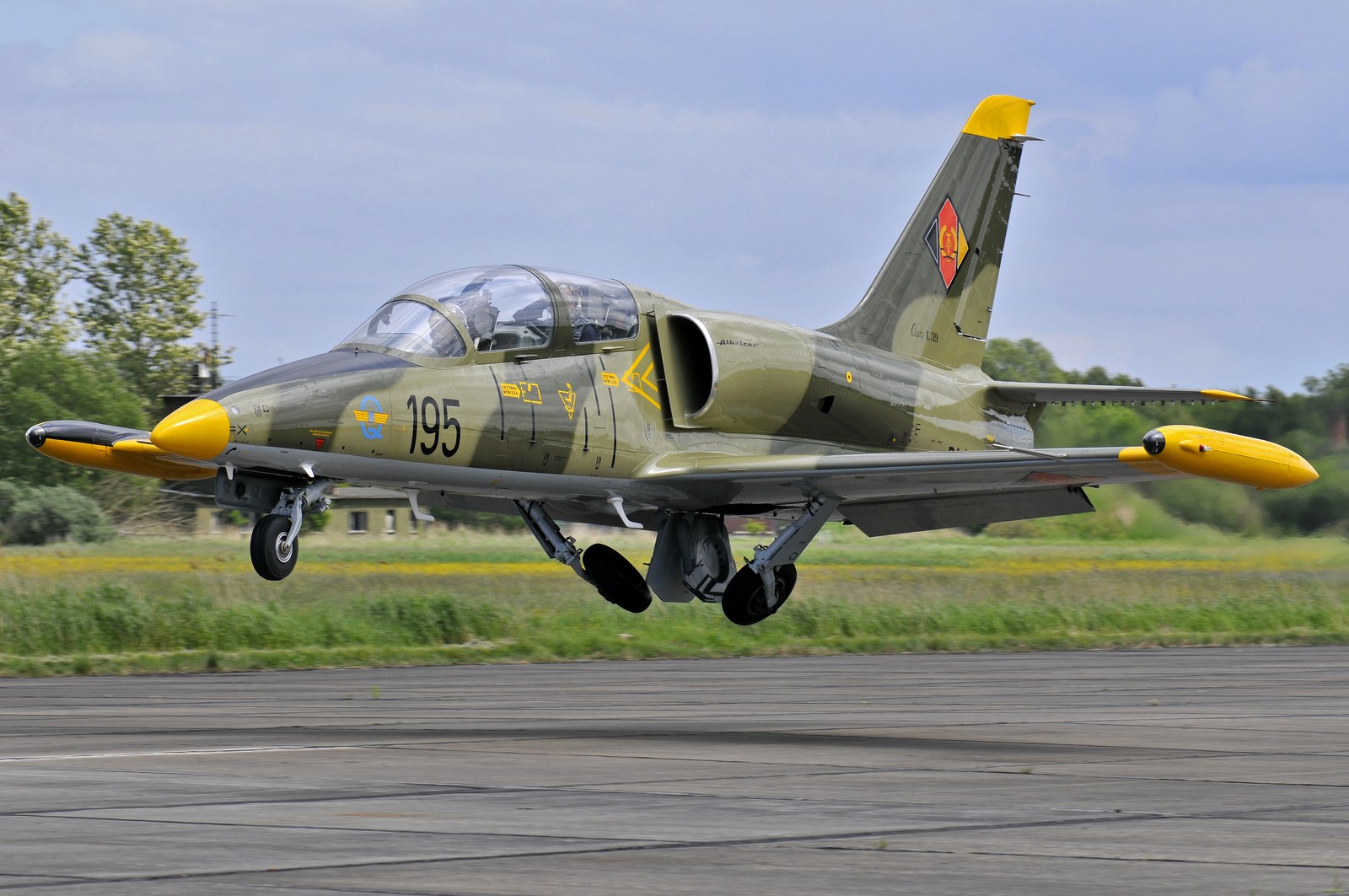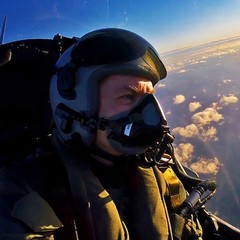-
Posts
287 -
Joined
-
Last visited
About portman
- Birthday 09/03/1983
Personal Information
-
Flight Simulators
DCS World
-
Location
GDR
-
Interests
Historic Aviation
Recent Profile Visitors
7140 profile views
-
portman started following Cockpit 3D model problem (in both variant, L-39C and ZA too) , RKL-41 C AUT position question , MiG-19P Farmer "B" Status and 7 others
-

No hypoxia from high altitude, only O2 valve off
portman replied to SMH's topic in Bugs and Problems
Hypoxia occurs when there is not enough oxygen. However, in your MiG you wear your oxygen mask at all times, so no hypoxia is going to occur (except when you turn off the oxygen valve...). The main reason for using the pressurization system is the low air pressure at high altitudes, which your body would not survive (your body fluids start to boil etc.). -
I've had a look at the document "The radio and radio measuring equipment of the L-39 aircraft" of the East German Air Force again. According to this document, switching from O to I only takes place if the course angle to the beacon (i.e. the RKL needle) is within a range of +-30°. If the course angle to the radio beacon is outside +-30°, the aircraft switches back to O. This means that the direction of the runway is not taken into account at all, but only the position of the RKL needle.
-
I guess it has to do with the course selector, which should be aligned with the runway axis on approach, but I don't know exactly, sorry.
-
This only works if you fly over the outer marker within the limits of +-30° to the runway axis and with the landing gear extended. Your radio compass should then switch to tracking the inner NDB.
-
Commandos - Behind enemy lines. I can still play it today, and it's tons of fun, but it's just not the same as back in the days... because the times, the places, the friends from back then are all kinda gone now. Just like BeatriceDrake said, it's all about nostalgia and memories.
-
Google for SIMple SIMpit.
-
No.
-
Yes, they were used for approach procedures like "2x180°" and the so called "calculated angle" which were technically bad weather approach procedures, just like I wrote before. Nevertheless, they were used every day. But this has nothing to do with navigation as used on cross-country flying, which was done by compass & stopwatch in the first place. In bad weather and at night, the radar is not just an addition, it is a neccessity. Yes, GCI guided your plane to a position behind the enemy, so that - in good weather conditions - you could see the enemy right in front of you. But at night and in bad weather, you had to switch on your radar to "see" the enemy. Hence, all-weather interceptors were equipped with a radar. This is why the MiG-19S ist not an all-weather interceptor. BTW, these terms were not invented by me, but by soviet design bureaus. But this is getting off-topic. Anyone who knows how to radio-navigate soviet style on the Sinai map, please take over.
-
Sorry, I don't know if there's a solution for placing ARK stations on the Sinai map. But be assured that compass and stopwatch navigation has nothing to do with piston aircraft. It still was the main navigation type in that "golden MiG era", and would be used in all weather conditions and in night time. Radio navigation systems like ARK and RSBN have always been a navigation aid, but never a standalone navigation type. I personally only use ARK stations for bad weather landings and checking the aircraft's position by cross bearing, and that's what the ancestors did. The term "all-weather interceptor" rather implies the presence of a radar system than the use of radio navigation.
-
By using a map, a compass and a stopwatch, and - if you're really serious about it - doing wind calculation before
-
To "germanize westernize" the plane you would have to swap the whole navigation system (RSBN -> TACAN), the radio, the IFF, disable the laser range finder and - IIRC - throttle the engines and then you can change the nationality markings from "dark side" to "bright side". Sorry, I just can't resist rivet-counting
-
Hi Apar, did you find a solution for this? Thanks.
-
Richtig. Ja, das wäre logisch. Ich kann im folgenden nur für die NVA sprechen, hier wurde beim Steigflug bereits in 900 m Höhe von QFE auf Standarddruck (nicht QNH) gewechselt. Die einzuhaltenden Flughöhen wurden während der Startvorbereitung anhand des aktuellen Luftdrucks auf den Standarddruck umgerechnet. Etwas umständlich, aber so war es halt. Da alle militärischen Flugzeuge nach Standarddruck flogen, war das Dekonflikten kein Problem. Zur Erklärung für diejenigen, die jetzt sagen "Mit dem Standarddruck weiß ich aber immer noch nicht, wie hoch ich über dem Hindernis bin!" muss man sagen, dass das tägliche Training in der NVA auf sogenannten "Standardstrecken" bzw. in sogenannten "Zonen" durchgeführt wurde, deren Topographie man kannte und bei denen die zulässigen Flughöhen festgelegt waren. Internationale Luftstraßen, die durch die DDR führten, und Flughöhen für zivile Flugzeuge wurden dabei ausgeklammert. Es gab also kein "wildes Herumfliegen" in unbekannten Lufträumen mit unbekannten Hindernissen. In diesem kleinen Land mit den vielen Militärflugplätzen (GSSD!) ging das auch gar nicht anders. Auch bei Verlegungen auf andere Flugplätze oder in die UdSSR wurden definierte Strecken benutzt, deren Hindernisse man kannte und bei denen man Kollisionen o.ä. bereits in der Flugvorbereitung ausschließen konnte. Am Zielort drehte man wieder den QFE des Zielflugplatzes ein und landete. Bei (Not)Landungen auf einem anderen Flugplatz innerhalb der DDR waren die meteorologischen Bedingungen meist gleich dem Basierungsflugplatz, so dass man mit dem "alten" QFE dort auch landen konnte, wenn man die Differenzhöhe des neuen Flugplatzes (dessen Höhe über NN im Kniebrett vermerkt war) am Höhenmesser eindrehte. Wie das ganze im E-Fall ausgesehen hätte, wenn alle durcheinander - und womöglich auf unbekanntem Terrain - gekurbelt hätten, weiß ich auch nicht - und vermutlich wäre es auch egal gewesen. Deshalb wurde es wohl so gemacht. Dafür wurde wie gesagt auf Standarddruck gedreht. Bei Flügen in geringen Höhen gab es Sicherheitsflughöhen und den Mk. 1 Eyeball. Volle Zustimmung.
-
Hat hier irgendjemand behauptet, man müsse auf einer westlichen Karte in einem westlichen Flugzeug QFE verwenden? Es ging bei meinem Einwurf ursprünglich nicht darum, was in Nevada Fakt ist, sondern was in der UdSSR und DDR Fakt war. DCS hat seine Ursprünge nunmal im Osten , und alles, was ihr heute seht, hat mal mit einer Su-27 auf einer Kaukasus-Karte angefangen. Und da war die Verwendung von QFE eben nicht per se "falsch, rudimentär, irreführend", wie du so schön geschrieben hast, sondern tägliche Realität im Flugdienst. Das ist ein Überbleibsel von früher, ein Überbleibsel aus dem Osten, nicht mehr und nicht weniger. Eine neue ATC ist ja in der Mache. Der Westen flog und fliegt mit QNH - na dann los, ich halte euch nicht ab. Mal über den Tellerrand schauen ist aber auch nicht verkehrt.
-
Nein, war nur ganz allgemein. Und wir wolllen nicht alle über einen Kamm geschert werden.





